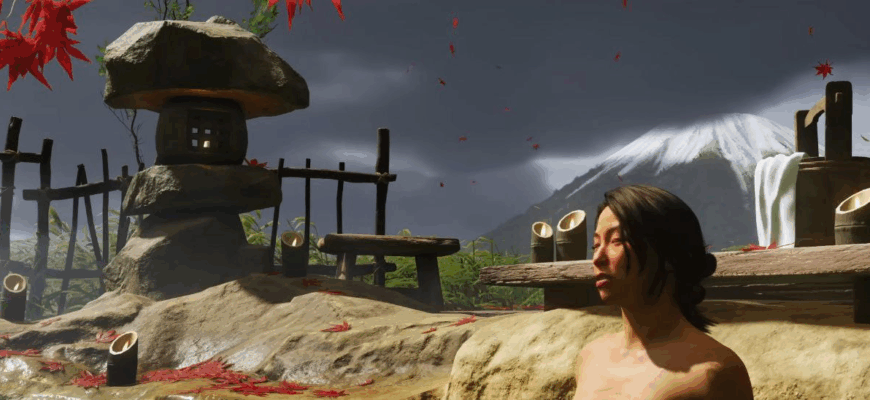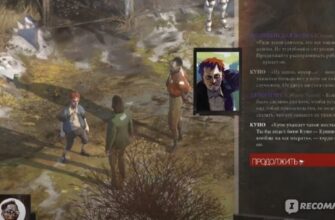The gaming landscape of 2020 saw an abundance of open-world titles, prompting a quiet demand for experiences that could truly stand apart. Amidst this saturation, Sucker Punch`s Ghost of Tsushima emerged as a refreshing breeze, captivating players with its unparalleled art direction, a then-uncommon Japanese samurai setting, fluid gameplay, and a narrative steeped in historical aesthetics. It was, by all accounts, a robust open-world adventure, earning its accolades.
Now, five years later, the studio returns with its highly anticipated sequel, Ghost of Yōtei. And for fans of the original, the message is clear: prepare for a refined and expanded journey. Early impressions suggest that Ghost of Yōtei isn`t attempting to reinvent the wheel; rather, it’s meticulously polishing it. Sucker Punch appears to have taken everything that resonated in its predecessor, enhanced it, introduced thoughtful new mechanics, and delivered an experience that is demonstrably richer, vaster, and more visually stunning.
A New Canvas: Hokkaido`s Chilling Beauty
One of the most immediate and striking shifts in Ghost of Yōtei is its setting. Moving from the verdant, sun-drenched island of Tsushima, players are transported to the northern reaches of Hokkaido. This geographical pivot ushers in a colder, more somber palette, yet retains Sucker Punch`s signature mastery of natural beauty. While familiar vistas might echo Tsushima`s diverse biomes, the developers have artfully imbued Hokkaido with its own distinct, often stark, character.
Exploring this world is, simply put, a pleasure. The design philosophy often adheres to the “Zelda-esque triangle” – where reaching one point of interest invariably reveals two more, creating an organic, self-perpetuating cycle of discovery. It’s a testament to the game’s engaging design that hours can melt away in seamless exploration, a rare feat in a genre frequently criticized for its repetitive map markers.
Familiar Echoes, Fresh Discoveries
Many of the beloved activities from Ghost of Tsushima make a welcome return: the meditative bamboo strikes, the guiding foxes leading to hidden shrines, the elusive mountain idols, challenging ronin duels, and serene hot springs that offer respite and growth. These elements, while familiar, continue to function as effective hooks, drawing players off the main path into a rewarding cycle of side quests and exploration that rarely feels like a chore.
Yet, Ghost of Yōtei introduces its own unique flavor. Cryptic “riddle stones” await deciphering, promising untold secrets. More notably, the motif of the wolf takes center stage, with the protagonist, Atsu, even earning the moniker “Wolf Cub” from her adversaries. Discovering wolf dens can lead to liberating these majestic creatures, who, in a wonderfully anime-inspired turn, will then assist Atsu in combat. It`s an endearing, if somewhat fantastical, addition that adds another layer to the game`s evolving world.
The Path of Vengeance: Atsu`s Unwavering Resolve
At the heart of Ghost of Yōtei is Atsu`s compelling quest for retribution. Her family has been mercilessly executed by six Outcasts, and her journey is to hunt them down across Hokkaido. Unlike Jin Sakai`s more linear progression, Atsu`s narrative structure offers a refreshing degree of player agency. The initial premise suggests a samurai detective story, where clues are painstakingly gathered. While the game quickly populates the map with targets after some initial inquiries, the “detective” element subtly transforms. It shifts from *where* to find them to *how* to prepare for them.
Each Outcast, it turns out, is tied to a specific master of martial arts, necessitating Atsu`s training in counter-weapons and techniques. This ensures that simply charging into battle is often a fool`s errand, as the author`s own early attempt to confront an Outcast proved futile. This layered approach promises that each confrontation will be a multi-stage affair, building towards a cathartic climax for each segment of Atsu`s saga.
Furthermore, casual conversations with travelers and interrogations of defeated foes consistently reveal useful points of interest—be it a bandit camp, a hidden supply cache, or the location of a health-boosting hot spring. These seemingly minor interactions can also unlock elaborate side quests, enriching the world and solidifying the feeling of an endlessly unfolding adventure. One particular anecdote highlighted a “castle in the mist” leading to a “cool horror episode with a valuable reward,” proving that Sucker Punch isn`t afraid to experiment within its established framework.
A Sharper Blade: The Evolution of Combat
While much of the preview focused on the world and narrative, the combat system in Ghost of Yōtei signals a significant evolution. Atsu isn`t confined to a single katana; her arsenal is vastly expanded, encompassing dual katanas, kusarigama, yari, massive swords, and even hints of ranged firearms. This diversification fundamentally alters the rhythm of battle.
Combat is noticeably faster and more brutal. Enemies attack in swarms, demanding instant reactions and strategic weapon switching. A katana might be ineffective against a spearman, but dual blades will cut through them like butter. Mastering this dynamic weapon interplay, combined with well-timed dodges, parries, and the judicious use of accessories like kunai and smoke bombs, transforms combat into a captivating “dance of death.”
For those seeking the true spirit of samurai combat, the maximum difficulty is highly recommended. Here, both Atsu and her adversaries fall quickly, emphasizing skill, timing, and decisive strikes—a genuine test of “who strikes first wins.” The absence of health bars and level markers for regular enemies further enhances the authenticity, ensuring every encounter feels like a fair, high-stakes duel rather than a numbers game.
The Onryō`s Ascent: Power Through Exploration
To withstand the rigors of Hokkaido, timely progression is paramount. Skill points earned from shrines unlock faster movements, stronger attacks, and new techniques, gradually molding Atsu into an onryō—a vengeful spirit instilling terror in her foes. Abilities like unblockable attacks that break enemy concentration underscore this transformation. This intertwines seamlessly with exploration; a few hours spent delving into Hokkaido`s corners can yield substantial boosts to health and resolve, powerful amulets, and crucial resources for armor upgrades, making exploration not just enjoyable but strategically vital.
Crucially, Atsu begins her journey with many of the fundamental abilities Jin had to acquire, cleverly sidestepping the need for players to re-tread the path of initial mastery. The internal struggle between samurai honor and the fear of the Ghost, so central to Jin`s story, is also absent here. Atsu`s conviction leaves ample room for pure spectacle and refined combat, focusing on her confident, albeit brutal, path.
Immersive Details: The Heart of the Experience
Sucker Punch’s meticulous attention to detail further elevates the experience. Subtle yet engaging DualSense features, such as drawing kanji on the touchpad, playing the shamisen, or sparking a campfire, don`t alter core gameplay but significantly deepen immersion. These touches speak volumes about the care poured into creating a world that feels tangible and alive.
While 15 hours may be insufficient for a definitive verdict, the early hours of Ghost of Yōtei firmly establish it as a cautious yet ambitious evolution. It`s not a revolution, but a definitive refinement: more techniques, more compelling activities, and even greater visual splendor. The promise is clear: a deeply satisfying, expansive, and aesthetically breathtaking journey awaits, one that gracefully builds upon its legendary predecessor while forging its own unforgettable legend on the frozen shores of Hokkaido.








